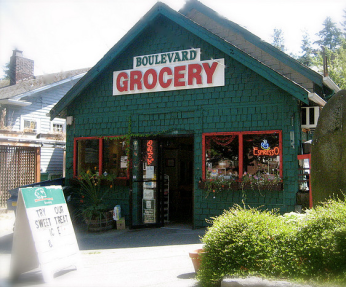Economic Impact of Local Businesses vs. Chains
April 3, 2013
Stacy Mitchell is a senior researcher with the Institute for Local Self-Reliance and has compiled some key studies on local store vs chainstore impact on local economics.
Of interest from a study by the Institute for Local Self-Reliance and Friends of Midcoast Maine, September 2003.: “Three times as much money stays in the local economy when you buy goods and services from locally owned businesses instead of large chain stores, according to this analysis, which tracked the revenue and expenditures of eight locally owned businesses in Midcoast Maine. The survey found that the businesses, with had combined sales of $5.7 million in 2002, spent 44.6 percent of their revenue within the surrounding two counties. Another 8.7 percent was spent elsewhere in the state of Maine. The four largest components of this local spending were: wages and benefits paid to local employees; goods and services purchased from other local businesses; profits that accrued to local owners; and taxes paid to local and state government. Using a variety of sources, the analysis estimates that a national big box retailer operating in Midcoast Maine returns just 14.1 percent of its revenue to the local economy, mostly in the form of payroll. The rest leaves the state, flowing to out-of-state suppliers or back to corporate headquarters. The survey also found that the local businesses contributed more to charity than national chains.”
And in The San Francisco Retail Diversity Study – By Civic Economics, May 2007: “Every $1 million spent at local bookstores, for example, creates $321,000 in additional economic activity in the area, including $119,000 in wages paid to local employees. That same $1 million spent at chain bookstores generates only $188,000 in local economic activity, including $71,000 in local wages. The same was true in the other categories. For every $1 million in sales, independent toy stores create 2.22 local jobs, while chains create just 1.31. The final part of the study analyzes the impact of a modest shift in consumer spending. If residents were to redirect just 10 percent of their spending from chains to local businesses, that would generate $192 million in additional economic activity in San Francisco and almost 1,300 new jobs.”
Filed in Creative Business, Environment, Permaculture, Social impact, Sustainable Design, Uncategorized
Tags: big box stores, chainstores, consumer spending locally, economic activity. Institue for Local Self-Reliance, local stores, Stacy Mitchell



June 27, 2013 at 7:57 pm
Thank you for this!
I was so upset to find out yesterday they will probably be rezoning farmland to put in a Costco right beside a small little farm market in the outskirts of my city. The weird part is, everyone (including the store owners) is thrilled and doesn’t see the downside.
June 27, 2013 at 8:39 pm
Cathy-it is such sad news. We cannot live without food and farms are where food grow. Food doesn’t grow at Costco– at Costco the food is trucked in from far away… find others who feel the same as you do and organize some civic action to prevent? Check out: http://www.sprawlbusters.com